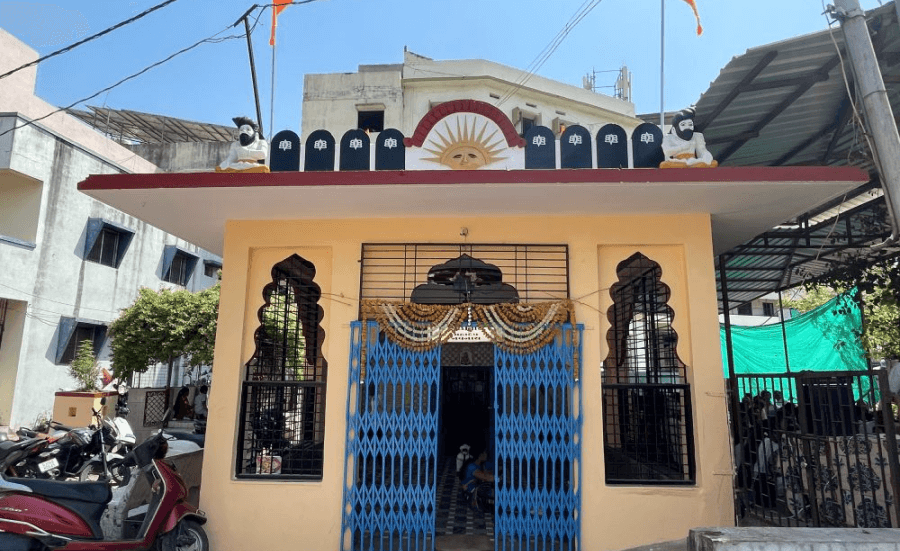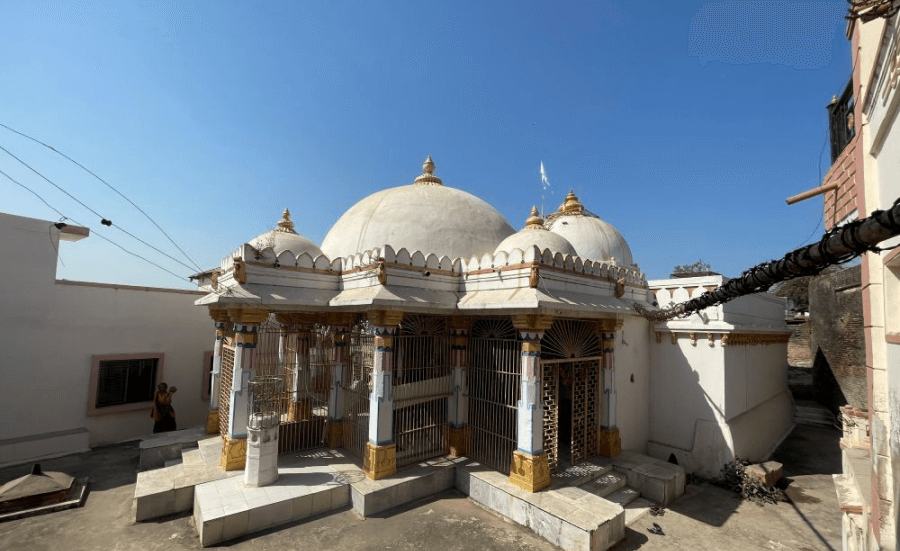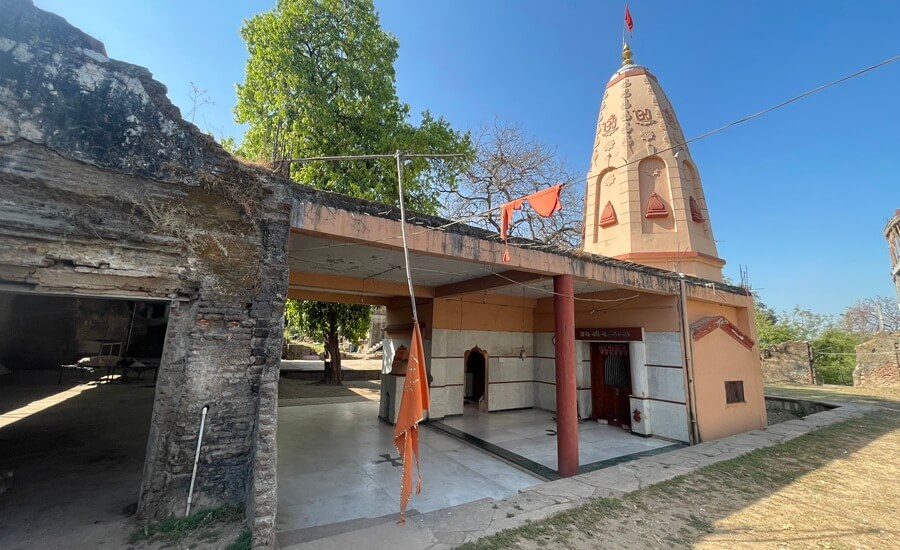
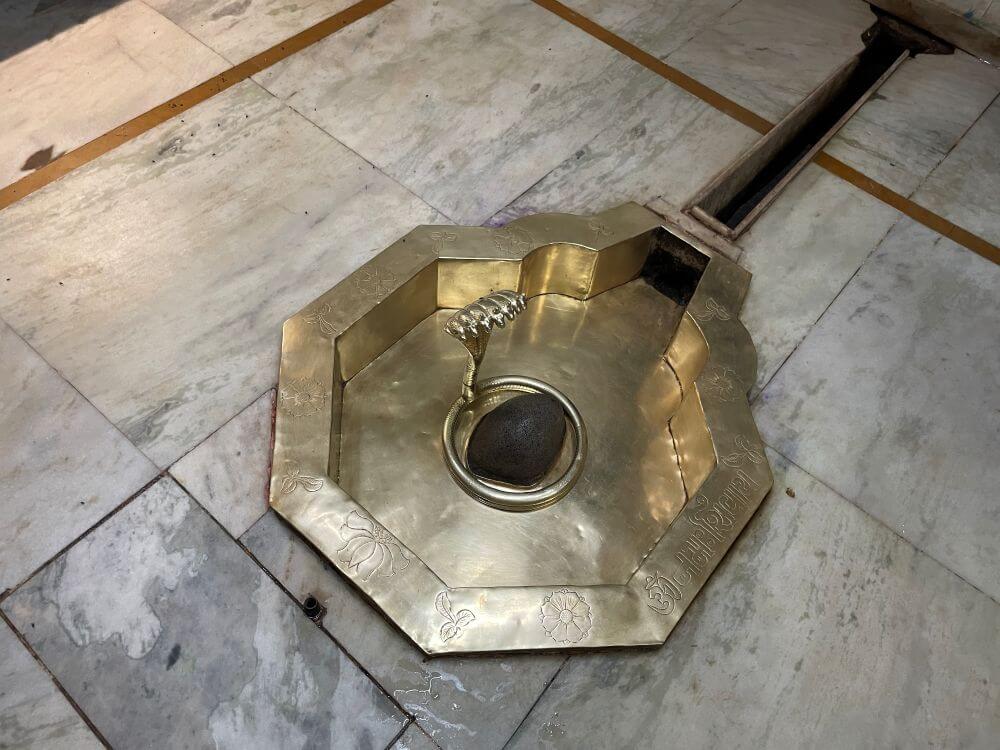
The Kamnath Mahadev Temple, considered the fifth among the nine Mahadev temples believed to protect Vadodara, is located in the Sayajibaug area of the city. Situated near the ghat along the Vishwamitri River, this temple is a symbol of Vadodara’s rich cultural and architectural heritage. The Shivling here is self-manifested (Swayambhu) and is believed to be spiritually awakened. Devotees believe that worshiping Kamnath Mahadev with devotion leads to the fulfillment of all desires, hence the name Kamnath (the fulfiller of wishes). Adjacent to this temple is the Ramnath Mahadev Temple, which is a replica of it.
The legend about this temple tells that in ancient times, there was a dense forest in the area around this temple. 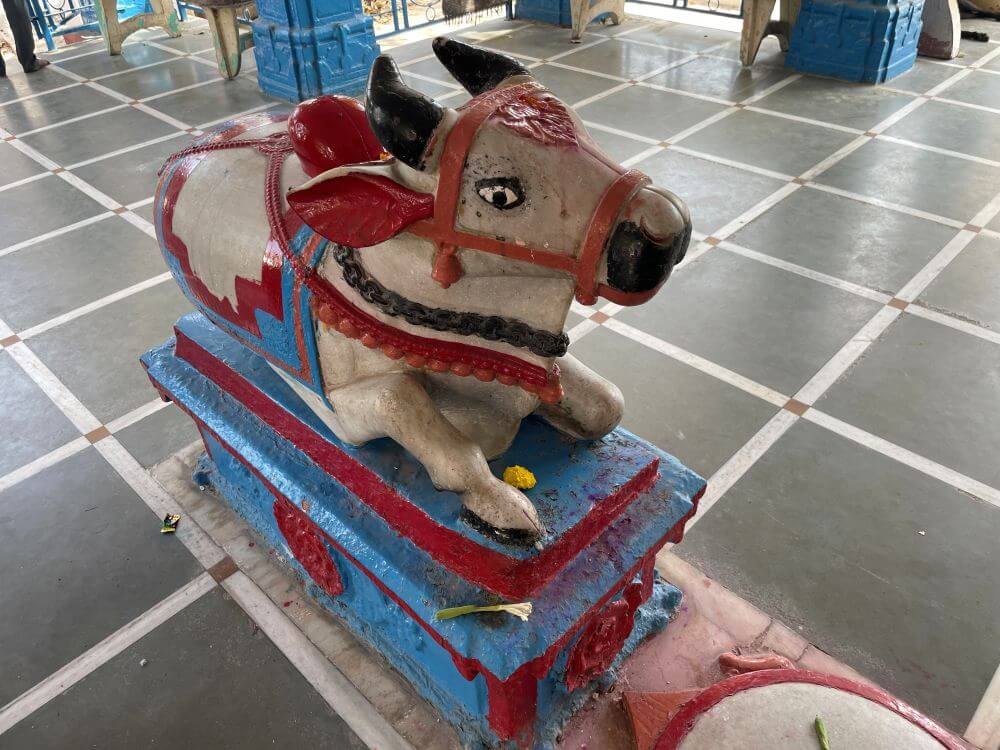 Herdsmen from nearby villages would bring their cattle to graze here. Among them, a white cow would regularly release milk at a specific spot in the area. This went on for several days. One day, the herdsman informed the villagers and they began excavating the spot. They found a Shivling underground. The more they tried to remove it, the deeper it would sink. Finally, they decided to consecrate the Shivling right there and the temple was built at that location.
Herdsmen from nearby villages would bring their cattle to graze here. Among them, a white cow would regularly release milk at a specific spot in the area. This went on for several days. One day, the herdsman informed the villagers and they began excavating the spot. They found a Shivling underground. The more they tried to remove it, the deeper it would sink. Finally, they decided to consecrate the Shivling right there and the temple was built at that location.
The Vishwamitri River flows eastward near this ghat and is home to crocodiles and turtles. The ghat is modeled after the ghats of Varanasi. In the early 19th century, the Gaekwad royal family of Baroda developed the temple area. Maharaja Sayajirao Gaekwad III used to visit this temple and offer prayers to Kamnath Mahadev. Before the Gaekwad rule, this area served as a major cremation ground. 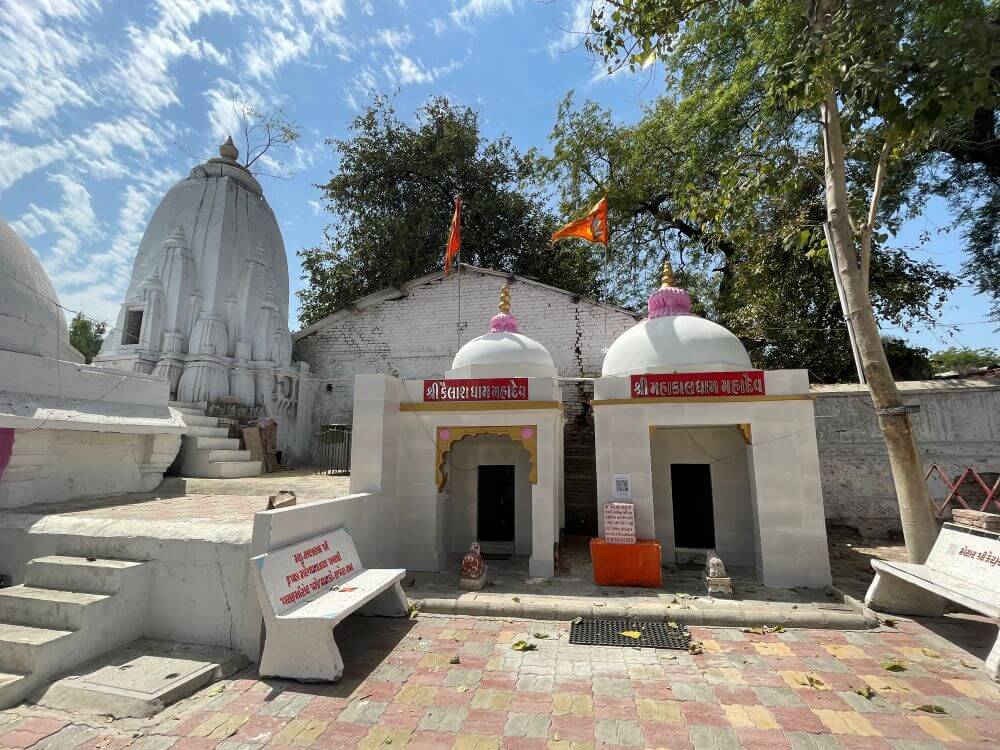 It was a tradition to build a small Shiv temple at the site of a male family member’s cremation and a Tulsi Kund (holy basil pond) for female members. As a result, numerous small Shiv temples and Tulsi ponds are found in the area. It is said that there were once over 1,600 Shiv shrines and many Tulsi ponds here.
It was a tradition to build a small Shiv temple at the site of a male family member’s cremation and a Tulsi Kund (holy basil pond) for female members. As a result, numerous small Shiv temples and Tulsi ponds are found in the area. It is said that there were once over 1,600 Shiv shrines and many Tulsi ponds here.
Although cremations no longer take place here, religious rituals are still performed during Shravan month, Adhik Maas and Pitru Paksha. During Sayajirao Gaekwad’s reign, a bridge connecting Kamnath Temple to Kamatibaug was constructed, but it collapsed in 1971 due to the heavy rush of devotees in Shravan.
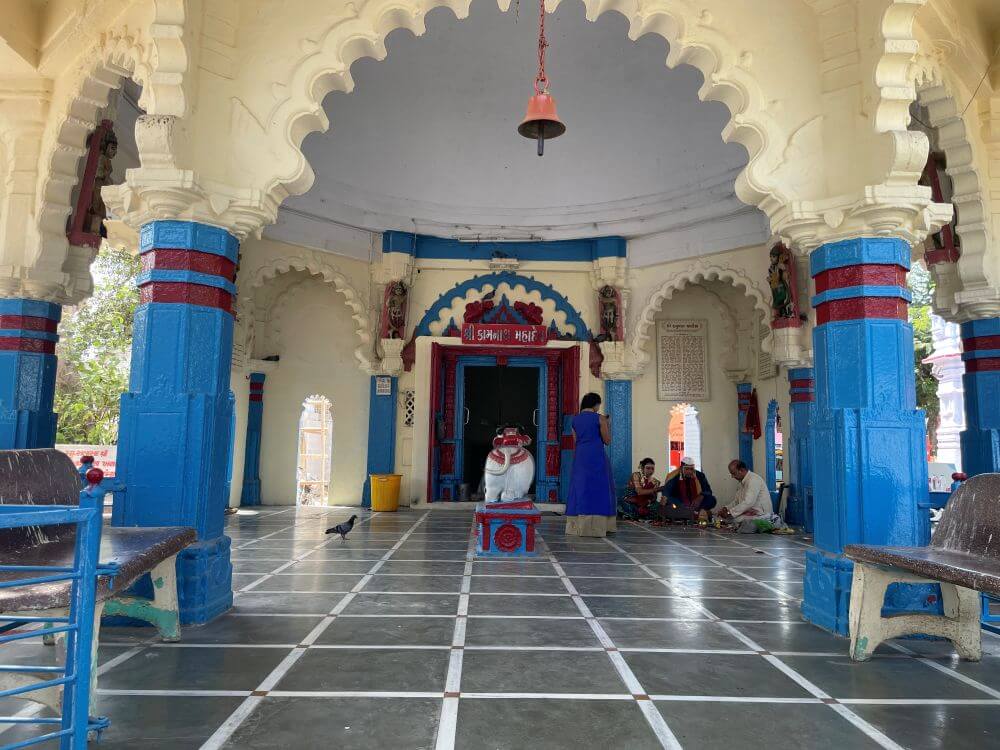 A few years ago, the city’s Kawad Yatra Committee, along with locals, cleaned the ghat area. During this effort, they discovered a stepwell, samadhis of eight saints from Atal Akhada, two ancient caves over 700 years old, a freshwater spring and a small garden.
A few years ago, the city’s Kawad Yatra Committee, along with locals, cleaned the ghat area. During this effort, they discovered a stepwell, samadhis of eight saints from Atal Akhada, two ancient caves over 700 years old, a freshwater spring and a small garden.
The temple, located behind Kamatibaug, is built in the Nagar architectural style. It consists of a mukhamandap (front porch), open assembly hall (sabhamandap) and sanctum sanctorum (garbhagriha). The sabhamandap has a domed spire, while the garbhagriha features a tall Nagar-style Urushringa spire.
The temple stands on a high platform and has three porches on three sides of the hall. The stone pillars below are square at the base and octagonal above, 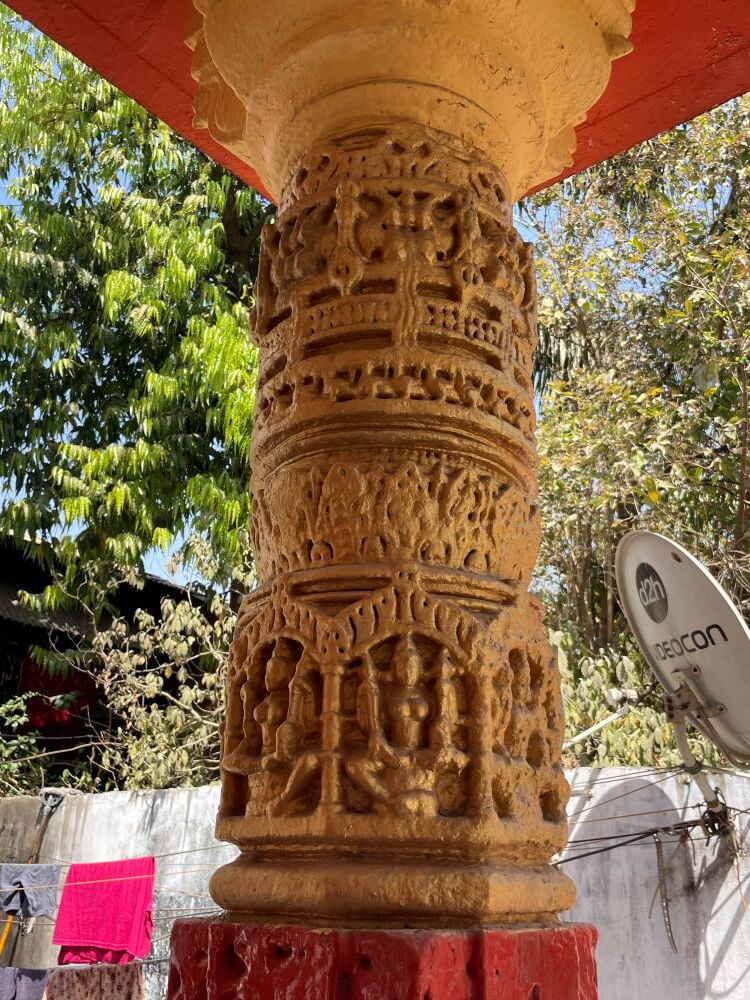 decorated with intricate carvings. Between the pillars are arched lintels with floral designs. At the corners of the porch roofs are carved sculptures of lions and elephants. The tops of the pillars inside the hall feature celestial dancer (Surasundari) sculptures. A stone Nandi idol sits on a platform in the hall, facing a stone turtle.
decorated with intricate carvings. Between the pillars are arched lintels with floral designs. At the corners of the porch roofs are carved sculptures of lions and elephants. The tops of the pillars inside the hall feature celestial dancer (Surasundari) sculptures. A stone Nandi idol sits on a platform in the hall, facing a stone turtle.
The entry to the sanctum has a stone doorframe, with doorkeeper sculptures at the base. The threshold (Mandaraka) of the door frame is a crescent-shaped stone, with Kirtimukhas (glorious faces) on both sides. A Ganesha idol sits at the center of the lintel (Lalat Bimba). A unique feature of this temple’s sanctum is that it is octagonal and about 15 to 20 feet deep. Upon entering, one sees statues of Ganesha on one side of the stair railing and Hanuman on the other. In the sanctum, the Shivling is housed in a metal frame made of five metals. In the shrine on the wall behind the Shivling is the place of Goddess Parvati.
Ramnath Mahadev Temple
Next to the Kamanath Mahadev Temple is the Ramnath Mahadev Temple, which is an exact replica of this temple. The distinctive feature of this temple is the painting on the dome-shaped ceiling of its assembly hall. Many historical and mythological scenes are painted here in miniature painting style. 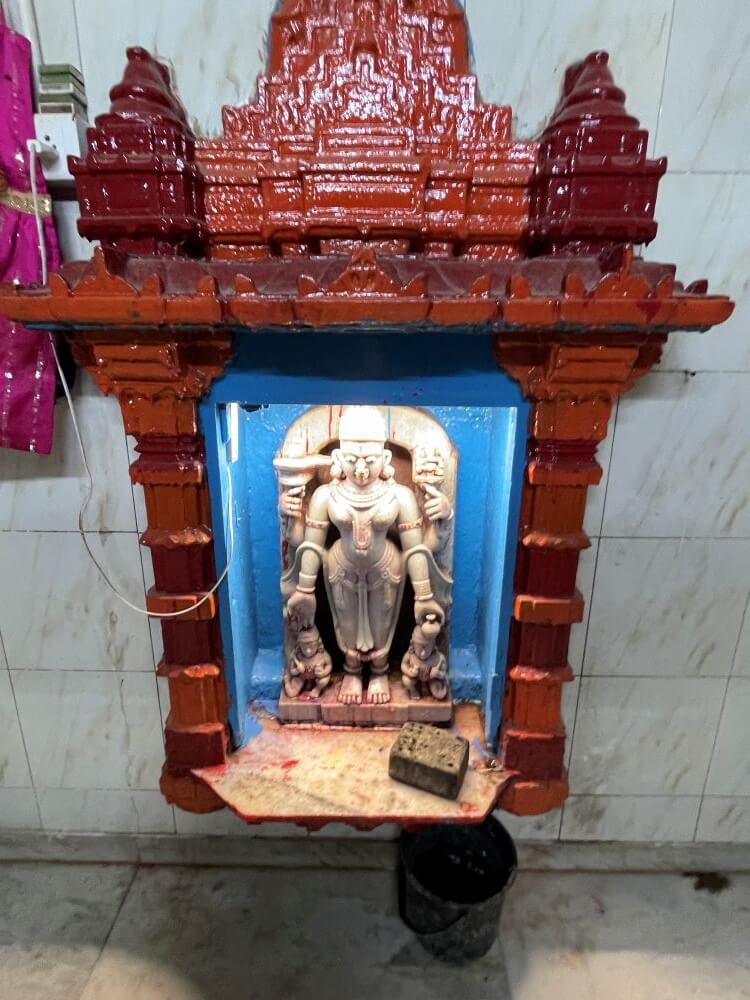 However, over time, these paintings have become very faint. Carved work has been done on the door pillars of the sanctum of this temple. At the central position of the lintel is a statue of Ganesha. The mandaraka is high with a crescent-shaped stone in front. There are Kirtimukhas on both sides of the lintel. At the upper position, there is carving like a temple structure, with a statue of an ascetic man in the center. On one side of the entrance, in a shrine, is the statue of Ganesha and on the other side is the statue of Hanuman. Inside, at ground level, is the Shivling and behind it, in a shrine, is the statue of Goddess Parvati.
However, over time, these paintings have become very faint. Carved work has been done on the door pillars of the sanctum of this temple. At the central position of the lintel is a statue of Ganesha. The mandaraka is high with a crescent-shaped stone in front. There are Kirtimukhas on both sides of the lintel. At the upper position, there is carving like a temple structure, with a statue of an ascetic man in the center. On one side of the entrance, in a shrine, is the statue of Ganesha and on the other side is the statue of Hanuman. Inside, at ground level, is the Shivling and behind it, in a shrine, is the statue of Goddess Parvati.
In the vicinity of this temple are small temples of Baliyadev, Hanuman, as well as Kailashdham Mahadev and Mahakaldham Mahadev. At one place in the temple courtyard, some ancient sculptures can also be seen.
Devotees believe that with the blessings of Kamanath Mahadev, all tasks are fulfilled. Therefore, there is always a crowd of devotees here. Various types of rituals like fault-removal (Dosh Nivaran) from Kundali, marriage, etc. are performed in this temple. During Mahashivratri and the month of Shravan this area becomes crowded with devotees. On the last Monday of the month of Shravan, the Kavad Yatra that departs from the city arrives here.
